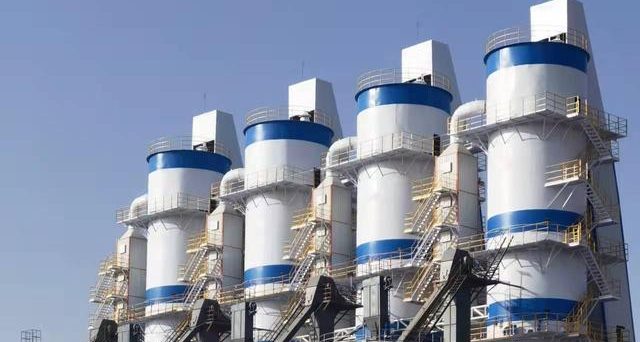
A vertical furnace body with continuous feeding is used to calcine limestone, so that the limestone is decomposed into quicklime CaO and carbon dioxide CO2 under high temperature conditions.
The working principle of the lime kiln mainly includes the following steps: First, the limestone is crushed and screened before entering the kiln body for calcination. During the calcination process, the fuel (such as coal, natural gas, etc.) is mixed with air and burned to generate high temperature, which decomposes the limestone into quicklime. The design of the kiln body usually includes the feeding system, combustion system, and discharge system to ensure that the limestone can be heated evenly and complete the chemical reaction.
Several common problems in the production process of lime kilns include raw burning, overburning, upward or downward movement of the calcination zone, nodules, and kiln deviation.
- Raw burning refers to the failure of limestone to be completely decomposed during the calcination process, resulting in the formation of undecomposed calcium carbonate in the quicklime.
- Overburning refers to the excessive decomposition of limestone due to excessive temperature or long time during the calcination process, resulting in dense over-burned lime or dead burnt lime.
- Calcination zone moves up: caused by small fuel particle size or small ash unloading and large ventilation.
- Calcination zone moves down: caused by large ash unloading, insufficient air volume or excessive fuel particle size.
- Nodule: due to excessively high local temperature in the kiln, nodules are formed on the surface of limestone.
- Kiln deviation: caused by uneven distribution or uneven ventilation.
The application of infrared thermal imaging in lime kilns has the following benefits:
- Real-time temperature monitoring: Infrared thermal imagers can monitor the surface temperature of lime kilns in real time, helping operators to understand the temperature distribution inside and outside the kiln in a timely manner. This helps prevent equipment damage and safety accidents, and ensures the continuity and stability of production.
- Predictive maintenance: By detecting abnormal hot spots on the surface of the kiln, infrared thermal imagers can detect damage or wear of the kiln lining in advance, so as to carry out planned shutdown maintenance, avoid production stoppages caused by sudden failures, and improve equipment availability and safety1. Reduce fuel consumption: Infrared thermal imagers can optimize the combustion process by precisely controlling the temperature, reduce fuel waste, reduce energy consumption, and improve combustion efficiency, thereby ensuring the stability and safety of the production process.
- Improve product quality: By real-time monitoring and controlling the temperature in the kiln, the quality and stability of lime products can be ensured, and quality problems caused by temperature fluctuations can be reduced.
- Safety warning function: The system has multiple safety measures, such as over-temperature alarm and abnormal pressure alarm. Operators can remotely access the system interface through the Internet, understand the production status in real time and conduct remote control, effectively reducing safety risks in the production process.
- Automated control: Through the remote monitoring function, managers can understand the production status and equipment operation status at any time, realize remote management and control, reduce personnel participation, and help enterprises reduce the risk of personnel injury.
- Optimize the combustion and ventilation process: The system can accurately control the combustion process through the collected temperature data, ensure that the fuel is fully utilized, reduce fuel waste, and optimize the ventilation process to improve production efficiency. In summary, the application of infrared thermal imaging in lime kilns can not only improve production efficiency and safety, but also optimize the combustion process, reduce fuel consumption, improve product quality, and have automatic control and safety warning functions.


